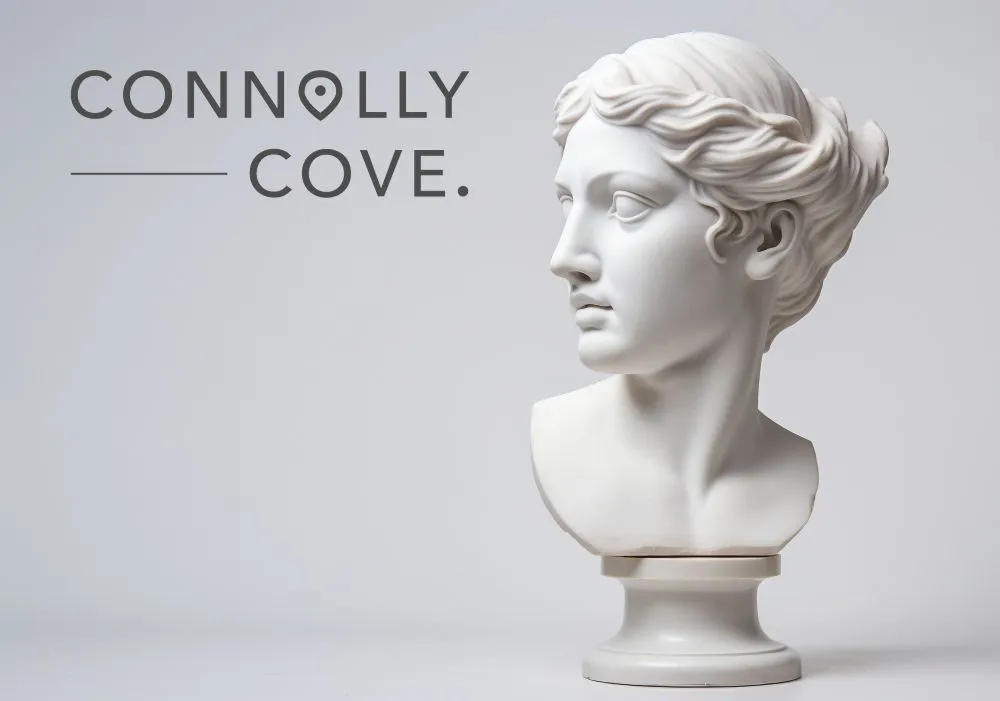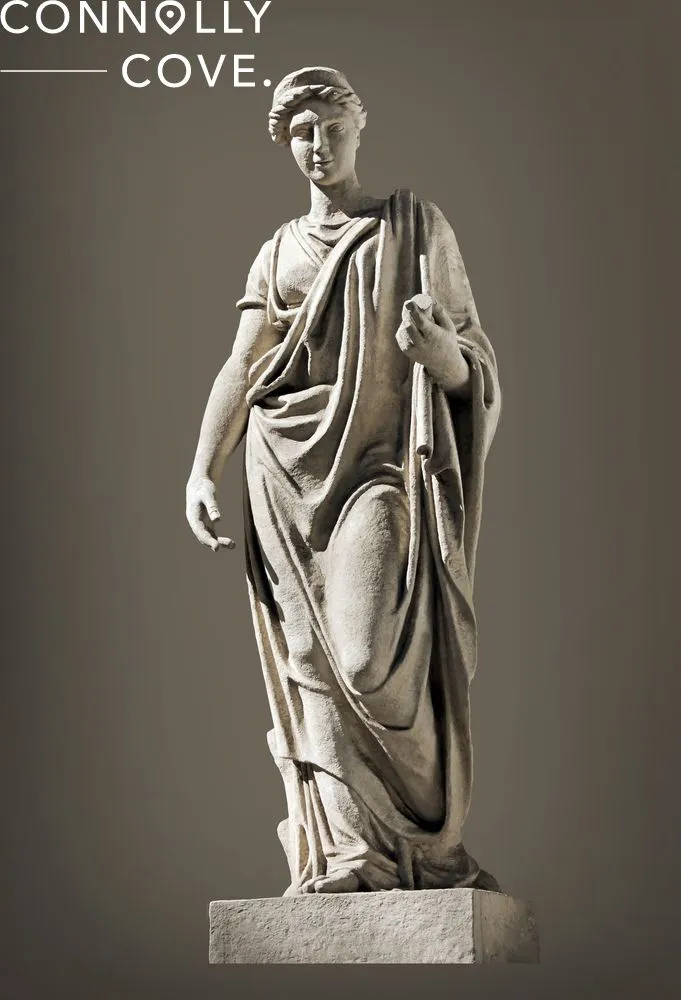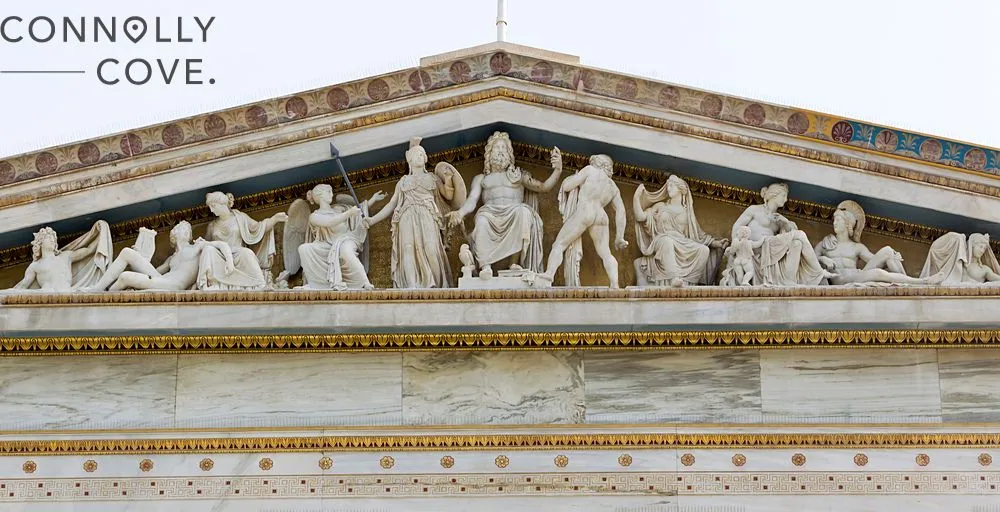Understanding Every Hera Symbol in Greek Mythology

Updated On: April 22, 2024 by Yasmin Elwan
In the pantheon of ancient Greek deities, Hera stands as a figure of immense power and dignity. As the wife of Zeus and the queen of the Olympian gods, Hera commands respect and reverence, a status underscored by the rich tapestry of symbols associated with her. Each Hera symbol, from the majestic peacock to the regal diadem, weaves a story of her dominion over marriage, childbirth, and the life of women.
These icons are not mere representations; they are potent artefacts of her influence, deeply embedded in myth and the ancient world’s consciousness. As we delve into the realm of this divine matriarch, we uncover the layers of meaning behind each emblem, exploring how they contribute to the complex identity of a goddess who is both nurturer and protector, a figure of both fertility and relentless strength. Join us as we embark on a journey through the symbols of Hera, unravelling the threads of symbolism that surround this iconic figure of antiquity.
Key Takeaways
- Hera is the goddess of marriage and women in Greek mythology, ruling alongside her husband, Zeus, on Mount Olympus.
- She is often depicted as a beautiful queen wearing a crown and holding a royal sceptre, symbolizing her authority and power.
- The symbols associated with Hera include the peacock, which represents her regal nature; the lotus staff, representing fertility; and the pomegranate, symbolizing her role as a protector of marriage and family.
- Worship of Hera involved rituals, prayers, and offerings such as flowers (like lotus) or sacred plants associated with the goddess.
Who is Hera?

In Greek mythology, Hera is the goddess of marriage, women, childbirth, and family. She is one of the twelve Olympians and the daughter of the Titans Cronus and Rhea. Hera is the wife and sister of Zeus, the king of the gods, which makes her the queen of Olympus. Known for her jealous and vengeful nature, especially against Zeus’s numerous lovers and offspring, Hera plays a complex role in many myths.
Hera is often depicted as majestic and solemn, often crowned with the polos (a high cylindrical crown worn by various Greek goddesses) and holding a pomegranate, a symbol of fertility. Despite her often troubled marriage to Zeus, she is the guardian of marital order and fidelity. Hera’s Roman equivalent is Juno.
Appearance and Epithets
In classical art and literature, Hera is portrayed as a woman of majestic beauty, embodying the ideal of classical Greek womanhood. She is often depicted as regal and dignified, with a matronly grace that befits her status as the Queen of the Gods. Hera’s features are classically beautiful, and her expression carries an air of authority and command.
Hera’s eyes are described as cow-like, large and expressive, often reflecting her mood ranging from warm benevolence to fierce anger. Her hair is typically shown as long, often pulled back from her face and styled in an elaborate updo, befitting her royal status, sometimes crowned with a diadem or the polos, emphasising her sovereignty.
Her figure is full and statuesque, often draped in the rich attire of the ancient Greek style. She wears a himation, an over-garment that wraps around her body, leaving her arms free and often pinned at her shoulders with ornate brooches.
The fabrics that adorn her are luxurious, sometimes depicted as golden or decorated with peacock feathers, an animal sacred to her. Her posture is upright and commanding, reflecting her role as the goddess who presides over marriage and the sanctity of the family.
Hera’s appearance reflects her status as Queen of the Gods and Goddesses on Mount Olympus. In addition to her regal attire, she is sometimes accompanied by a lion or represented by symbols such as a cuckoo or hawk.
These animals are associated with Hera’s protective nature towards women during childbirth. As one of the most important Greek gods, Hera embodies the ideals of womanhood and matrimony in ancient Greek culture.
Hera Symbols Explained
Hera is associated with several symbols that represent her power and influence. One of the most prominent symbols is the peacock, which represents her regal nature and beauty. Another symbol is the crown, which signifies her status as queen of the gods. Additionally, Hera is often depicted holding a lotus staff, representing fertility and new beginnings.
The Peacock: Symbol of Immortality and Vanity
The peacock, with its dazzling display of iridescent feathers and regal bearing, serves as one of the most striking symbols associated with Hera. This majestic bird is often depicted in relation to the goddess, representing not only her beauty and dignity but also her all-seeing nature, as the eyes on the peacock’s tail were believed to symbolise the watchful eyes of the gods.
In mythology, the peacock’s connection to Hera stems from the tale of Argus, a hundred-eyed giant whom Hera appointed as a guardian. After Argus was slain by Hermes on Zeus’s orders, Hera, in her grief, transferred the eyes of Argus to the tail of her sacred bird, ensuring his vigilance would endure perpetually.
In ancient culture, the peacock symbolised the cosmic harmony and celestial canopy Hera was believed to oversee, while in modern interpretations, it has come to represent pride, vanity, and the beauty of creation. The peacock continues to be a potent emblem of immortality and renewal, reflecting the enduring legacy of Hera’s influence from antiquity to the present day.
The Pomegranate: Emblem of Fertility and Marriage
In ancient Greek culture, the pomegranate stood as a symbol of life, regeneration, and marriage, deeply rooted in the fertile soil of their rituals and beliefs. Its many seeds represented abundance and fertility, qualities that were intrinsically associated with Hera, the goddess of marriage and childbirth.
The connection between Hera and the pomegranate is profound, symbolising the bond of marriage as a fruitful and enduring union, blessed with prosperity and offspring. This sacred fruit was often depicted in the hands of Hera, an emblem of her ability to bestow and nurture life, mirroring her role as the divine matron of wedlock.
Throughout the annals of art and literature, the pomegranate recurs as a motif, echoing its mythological significance. It appears in ancient frescoes, classical vases, and texts, serving as a visual shorthand for Hera’s protective and nurturing influence over the marital home and the continuation of family lineage. Thus, the pomegranate, with its rich crimson hues and bountiful seeds, remains an enduring symbol of the goddess’s watchful presence over the sacred institution of marriage.
The Diadem and the Throne: Power and Queenship
The diadem, a jewelled headband akin to a royal tiara, is among the most potent symbols of Hera’s sovereignty. Worn by the goddess in many ancient depictions, it serves as a glittering testament to her supreme authority and her status as the queen among the Olympian deities.
Equally significant is the throne from which she presided over the divine assembly, a seat that not only underscored her elevated position but also her role as the arbiter of marriage and fidelity. In classical art and sculpture, Hera is often portrayed seated regally upon her throne, exuding an aura of unassailable dignity and command. This throne is not merely furniture; it is a pedestal for the divine, a tangible representation of Hera’s esteemed place in the celestial order.
From the marbled halls of Mount Olympus to the temples dedicated in her honour, the diadem and the throne are enduring emblems of Hera’s majestic role in mythology, encapsulating her dominion and the veneration she commanded across the ancient world.
The Cow and the Lion: Symbols of Hera’s Maternal Aspect
Within the rich tapestry of symbols associated with Hera, the cow and the lion stand prominently as emblems that reveal the dual nature of her divine persona. The cow, with its gentle eyes and life-sustaining milk, is emblematic of Hera’s nurturing aspects. It captures her role as a maternal figure, a caretaker of both deities and mortals, reflecting the softer side of her guardianship over marriage and childbirth.
Conversely, the lion, with its fierce mane and formidable roar, symbolises the more formidable aspects of Hera. This majestic beast represents her role as a protector of the sanctity of marriage and a defender of her position against the infidelities of Zeus. The lion is a testament to her assertiveness and willingness to assert her power when provoked.
Together, these symbols embody the complexity of Hera’s character as both a nurturing mother and a fierce protector, offering insight into the ancient world’s interpretation of femininity and power. They serve to remind us of the multifaceted role Hera played in Greek mythology, as she balanced her tender care with the assertion of her royal authority and righteous indignation.
Significance of Hera

As the protector of women during childbirth, Hera was highly respected and worshipped by many. Alongside her husband, Zeus, she rules over Mount Olympus and embodies the ideals associated with womanhood and matrimony. With her complex personality and importance among the Greek gods, Hera holds a special place in ancient Greek culture and religion.
Cultivating a Relationship With Hera
To cultivate a relationship with Hera, it is important to understand her significance in Greek mythology. She is known for her protective nature towards women during childbirth and serves as a symbol of strength and empowerment. When visiting Greece or exploring ancient Greek culture, it can be meaningful to learn more about Hera’s mythology and rituals surrounding her worship.
Connecting with this powerful deity can bring a sense of connection to one’s femininity or appreciation for the importance of marriage and family values in ancient Greece. By learning about Hera’s symbols like the peacock, crown, lotus staff, cuckoo, pomegranate, chariot, and sacred plants, you can deepen your understanding of her character as a significant figure in Greek mythology.
Worship and Offerings to Hera
People would honour Hera through rituals, prayers, and offerings. They believed that by showing respect to Hera, they could gain her favour and receive blessings in their own marriages and relationships. In temples dedicated to Hera, worshippers would bring gifts as offerings. These gifts could include flowers like lotus or sacred plants associated with the goddess.
Sometimes, people would offer pomegranates because they were seen as symbols of fertility. It was also common to see depictions of peacocks or chariots near these shrines because they were connected to Hera’s symbolism.
Hera’s story is a reminder of the importance of women in ancient Greek society. She was not just a wife and mother; she was a powerful deity who was worshipped and respected by her people. Her symbols are still used today to represent the qualities of strength, wisdom, and leadership.






